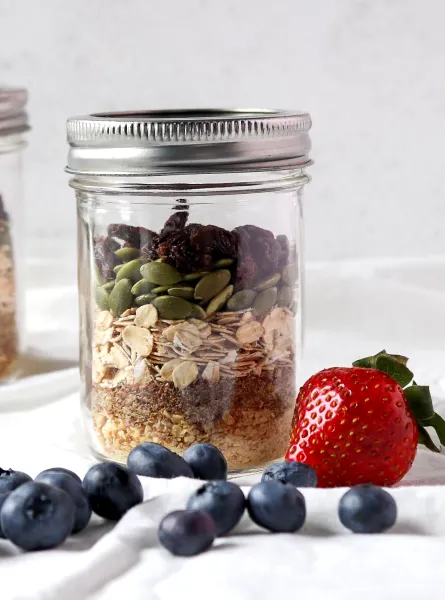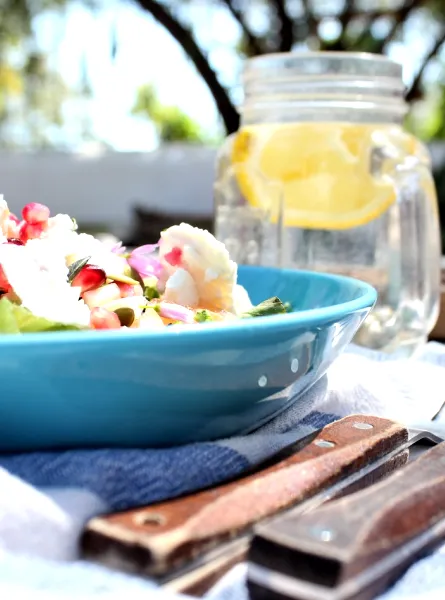
In this article :
- Why Are Snacks Important?
- Which Snacks Should Be Avoided?
- Healthy Snack Ideas
- Healthy Store-Bought Snack Ideas
- Tips to Make Snacks Fun
- Involve Kids in Snack Choices
- Consult a Registered Dietitian for Personalized Advice
Is your child getting hungry and restless in the middle of the afternoon? It's probably a sign that they need a snack to hold them over until the next meal. However, many store-bought snacks can be less than nutritious. So how can you ensure your child gets the nourishment they need for proper growth and development? By understanding how to compose a healthy snack!
1. Why Are Snacks Important?
- Maintain energy: Snacks can provide kids with a quick energy boost between meals, helping them stay focused and alert.
- Nutrient intake: Snacks can also help ensure children get the vitamins, minerals, and other nutrients needed for proper growth and development.
- Hunger control: Snacks can help control hunger and prevent overeating at meal times.
2. Which Snacks Should Be Avoided?
A healthy snack consists of one or more foods that provide essential nutrients and have minimal amounts of less nutritious components like saturated fats, added sugars, and salt. Here are some examples of less healthy snacks:
- 100-calorie cookie packs: High in added sugars and saturated fats, they are not very filling in the long term due to their low protein and fibre content.
- Small juice boxes: Many parents think juice is a good snack option. While fruit juice does contain vitamin C, it lacks the fibre found in whole fruit.
- Yogurt tubes: Parents often assume that yogurt is a healthy choice, but that's not always the case. Check the nutrition label: low in vitamins, protein, and often high in sugar.
3. Healthy Snack Ideas
A healthy snack includes protein, fibre, vitamins, minerals, and a short, easy-to-read ingredient list. The perfect snack combines two food groups. Here's how to compose a healthy snack for your child:
3. 1. Choose a carbohydrate-rich food (for energy):
- Fresh fruit (apple slices, pear, banana, etc.)
- Unsweetened applesauce or fruit puree
- Raw vegetables (carrot, cucumber, red bell pepper, etc.)
- Dried fruit (raisins, dates, etc.)
- Whole-grain crackers
- Whole-grain bread (sliced, pita, English muffin, etc.)
- Homemade fruit and whole-grain muffin
- Homemade cereal bar
3.2. Add a protein-rich food (to help last until the next meal):
- Roasted chickpeas
- Unsalted nuts and seeds
- Hummus
- Tofu spread
- Fortified soy milk or beverage
- Low-fat cheese, plain yogurt, or Greek yogurt
- Tuna or chicken spread
4. Healthy Store-Bought Snack Ideas
When you're short on time, it's helpful to have ready-made snacks on hand for your kids. Here are some suggestions:
- Zenit Energy Squares
- Made Good Cookies or Soft Bars
- Go Pure Fruit and Oat Bars
- Isabelle Huot's Blueberry and Double Bran Muffin Mix
5. Tips to Make Snacks Fun
To encourage kids to eat healthy, fibre-rich snacks, try making them fun and appealing. Some tips include:
- Present food creatively, making faces or animals with fruits and vegetables.
- Use cookie cutters to shape sandwiches or fruit into fun shapes.
- Make fruit and vegetable skewers with colourful sticks or straws.
- Involve your kids in snack preparation to get them excited about eating them.
6. Involve Kids in Snack Choices
Let your children participate in choosing their snacks by offering them multiple healthy options. This will help them feel responsible for their eating habits and develop good food choices. For example, you can:
- Set up a space in the fridge or pantry with individual portions of healthy snacks for children to choose from.
- Take your child grocery shopping and let them pick out fruits and vegetables they'd like to try.
- Encourage your kids to prepare their own snacks by showing them how to combine healthy foods.
7. Consult a Registered Dietitian for Personalized Advice
Every child is unique and has different nutritional needs. For personalized advice on your child's diet, don't hesitate to consult a registered dietitian or nutritionist. They can help you create a menu tailored to your child's specific needs and your lifestyle.






